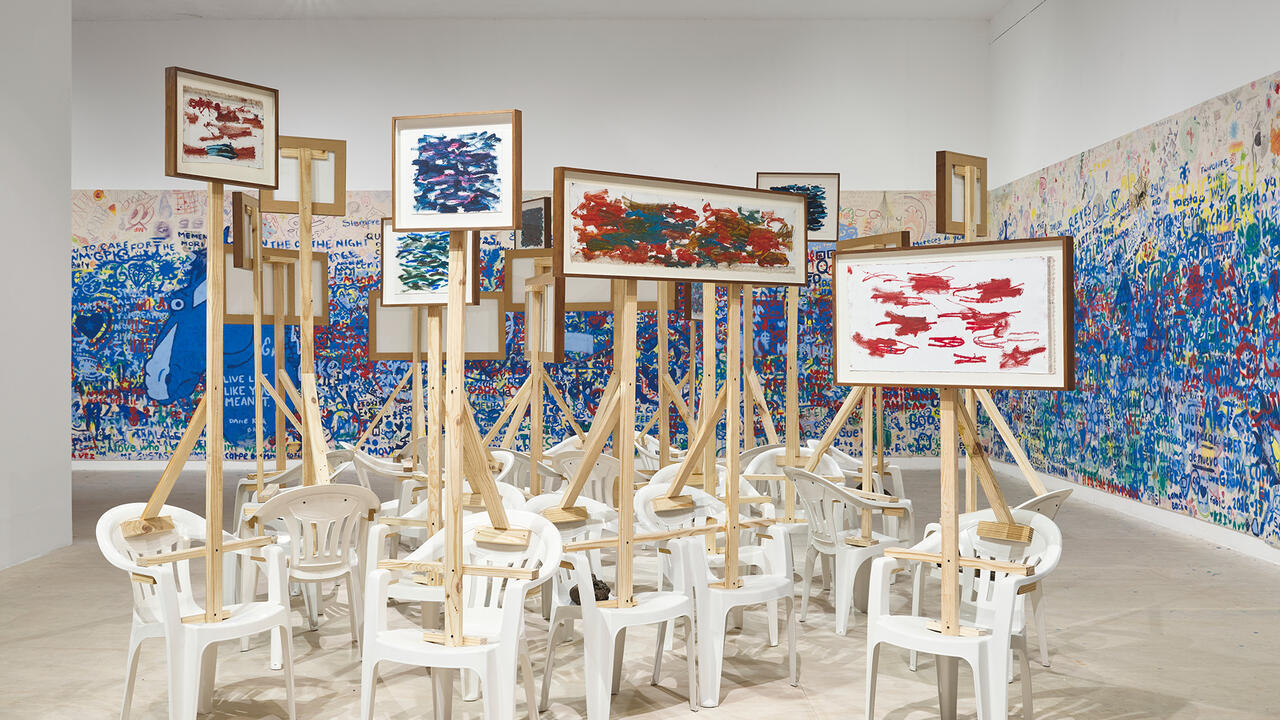Gillian Wearing

‘I don’t think there was the sustained awfulness that we really need,’ says one judge in Monty Python’s ‘The Most Awful Family in Britain’ sketch from 1974, ‘although the father was dirty, smelly and distasteful and I liked him very much.’ The competition was a spoof of the BBC series The Family which, when it was launched earlier that year, inaugurated a new style of fly-on-the-wall documentary. A precursor to reality television, the programme had a considerable impact on Gillian Wearing, whose practice has, for around 20 years, looked at the construction of ‘real-life’ drama. Like the Python sketch, her retrospective at the Whitechapel Gallery traffics in prurience, though has moments of comedy that heighten the pathos of the stories being told; the number of works on display (this exhibition is her largest to date and will tour to Düsseldorf and to Munich) paints a picture of modern British society that veers between the amusing and the awful.
Take 10–16 (1997), for which Wearing interviewed children and teenagers across the spectrum of ages listed in the title, and then directed actors to lip-sync to the audio recordings. The inversion is simple but powerful: there is something indescribably funny about a large, middle-aged man, recumbent on a sofa like a latter-day Venus, grinning as he describes his tree house; the tragic confession of a boy who ‘would love to kill [my mother] very much as I found out she is a lesbian’ takes on a full-grown menace through the man who speaks to camera. The result is similarly strong with 2 into 1, a video produced the same year, in which a mother’s descriptions of her twin sons is dubbed over footage of them describing her and vice-versa. The act of displacement amplifies the gravity of these confessions, reminding the listener of the child’s vulnerability to the adult world and of the profound impact that these experiences can have upon a person’s future development.
This video ventriloquism is consistent with Wearing’s interest in the idea of masks. For one of her earliest works included here she placed an advertisement in Time Out that later became the title: Confess All On Video. Don’t Worry, You Will Be In Disguise. Intrigued? Call Gillian … (1994). In a small confessional-style booth, the visitor can stand face to face with a host of characters, whose clownish costumes (including a gorilla head and women’s wigs) are at odds with the tales of immorality that they tell. Like the brilliant series of photographs ‘Signs that say what you want them to say, and not Signs that say what someone else wants you to say’ (1992–3), there is a tension between the opportunity for total candor and the chance to play up to camera. Both works are steeped in the language of ’90s tabloid talk shows (Jerry Springer debuted in 1991 and Ricki Lake in 1993) in a way that feels more relevant than ever to the culture of self-exposure today – it is difficult to believe that they pre-date YouTube.
At the heart of Wearing’s work is an exploration of the self through the other: ‘I am always trying to find ways of discovering new things about people,’ she has said, ‘and in the process discover more about myself.’ The point is made well by the layout of the downstairs gallery, which features a number of wooden video rooms framed around a single self-portrait hung in the centre of the back wall. Under inspection this image proves dissembling: a line cut around the eyes reveals it to be a photograph of Wearing wearing a mask of her own face. (Is it an example of so-called nominative determinism that Wearing should become so interested in how a person wears themselves?) The work is one of a number that have become literal poster images for her practice (the cover to the catalogue is Self Portrait Aged 17, 2003). Upstairs, several of these portraits in the guise of younger selves and family members hang opposite a number of Wearing herself as her artistic forebears, including Diane Arbus, Claude Cahun, Robert Mapplethorpe and Andy Warhol. These are creepy images in which she literally inhabits her icons, yet they are also deliberately soft by comparison to the work of Cindy Sherman or Glenn Ligon (whose physiognomies she has yet to tackle), as if Wearing wishes to simultaneously embody our national resistance to announcing artistic influences.
None of these portraits can match the brilliance of Dancing in Peckham (1994) – indeed, it’s impossible to avoid the fact that the most interesting works in the retrospective are also the earliest. The artist dances alone in a shopping precinct in South London, imitating a woman that she watched in the foyer of the Royal Albert Hall. The rehearsed choreography (enacted without any musical accompaniment) jars with the original spirit of self-expression, as does the transposition from high-brow to consumer culture. Gyrating and shimmying, Wearing seems to offer herself as the object of our humour, yet she also remains hidden within the act of impersonation, turning the camera on the reaction of her audience, within both the video and the gallery. What does exposure mean, the artist asks, in the age of the exposé?
















